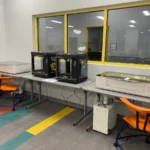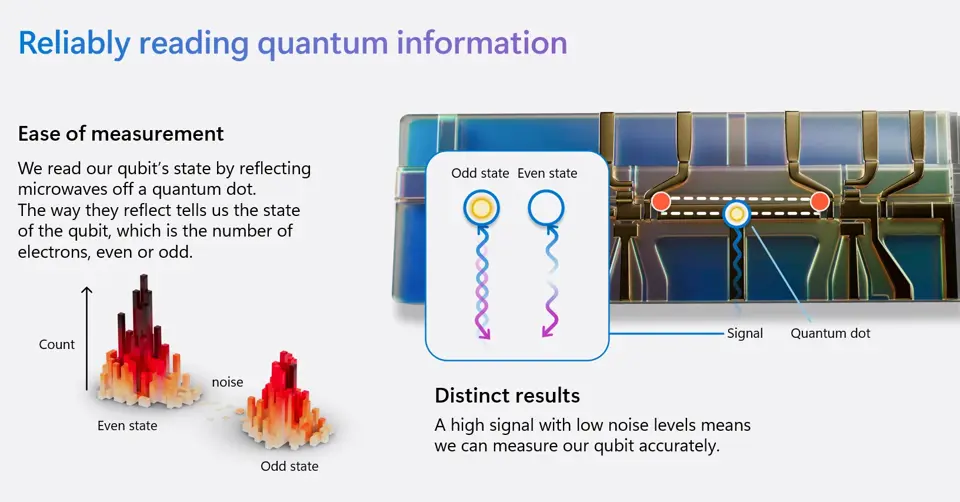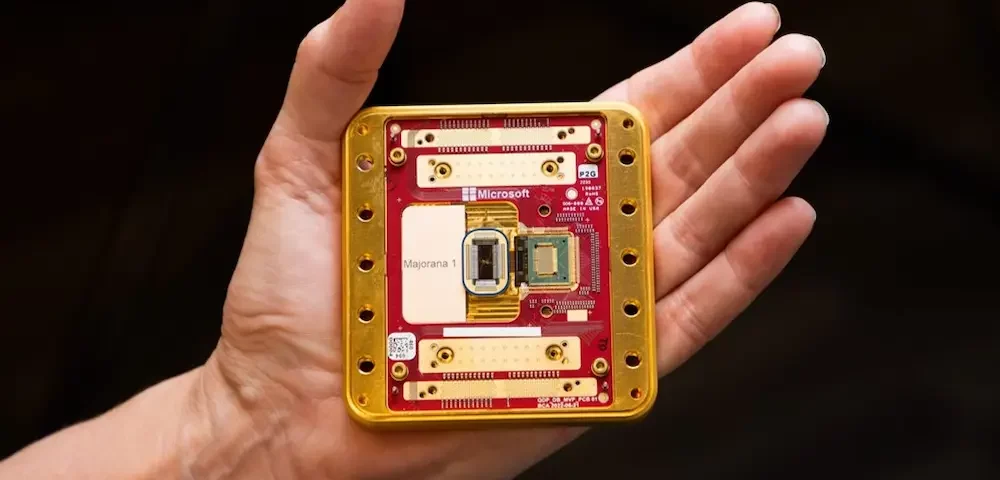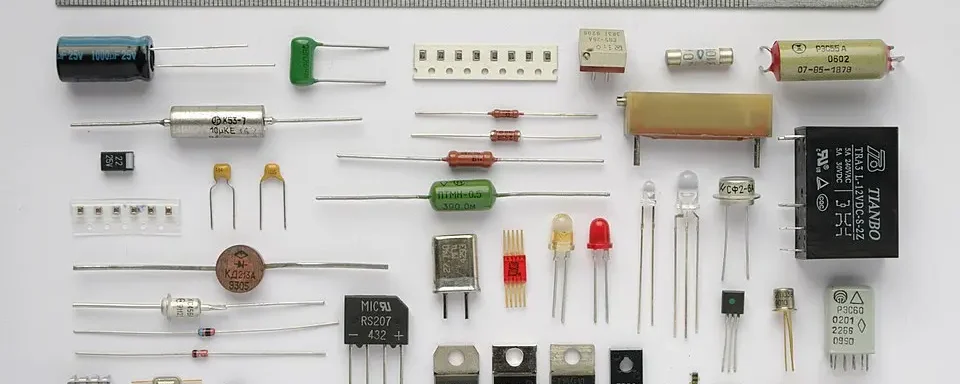
ASML and Wakeman Boys & Girls Club Team up to bring STEM to local youth
March 20, 2025
The new CREATE Innovation and Technological Center brings STEM skills to East Alabama
April 7, 2025The Future of Practical Quantum Computing
On February 19, Microsoft announced the creation of a new computer chip, the Majorana 1. But this is no ordinary computer chip: it’s a quantum computer chip! That’s right. Along with several other quantum processors that have been announced over the past few years, this revolutionary device has the potential to lead the way toward a future of practical quantum computing. And this quantum processor in particular holds a special place in my heart, as I, Dr. Jake Roark, used to be the lab manager for Microsoft Quantum Purdue, a lab here in our backyard of West Lafayette, Indiana that contributed to the research to make this device possible!
But before we get tangled in the quantum details, you might be asking yourself, what exactly is a quantum computer, and how does it work? Let’s dive in.
Traditional Computers vs. Quantum Computers
The Language of Traditional Computers
To understand how a quantum computer works, first, it’s important to understand how a traditional computer works. Traditional computers use a special mathematical language called “binary” to encode and process data. While a spoken language like English uses the familiar 26 letters of the alphabet to convey information, binary only uses two characters: 1s and 0s.
Each of the 1s or 0s in a piece of binary code corresponds directly to a tiny, microscopic device called a “transistor” that is either on or off. And computers contain billions and billions of these devices. A transistor acts like a little switch; it can either let electric current flow through it (its “on” state) or not allow current to flow through it (its “off” state). In this sense, a transistor in its “on” state is used to represent a 1 in binary while a transistor in its “off” state is used to represent a 0.
While classical computers use classical transistors to do what they do, quantum computers use quantum transistors. And while a classical transistor is limited to a binary value of 1 or 0, a quantum transistor can take on a value of 1, 0, or a combination of both at once (what quantum physicists refer to as a “superposition” of states). Think of it like a normal light switch versus a dimmer switch. A normal light switch can either be on or off. But a dimmer switch can be on, off, or anything in between, free to take on a continuous range (or mixture) of values instead of being restricted to only one of two discrete states.
The Power of Quantum Computers
This exotic nature of quantum transistors and quantum computers has several consequences. In general, as we add more and more transistors to a computer chip – whether it be classical or quantum – we can increase its computing power. But while classical computers scale linearly as you add more and more transistors, quantum computers scale exponentially. This gives quantum computers the ability to solve problems in minutes that would take even the most powerful classical computers thousands, millions, or even billions of years to compute!
With this in mind, quantum computers have the potential to revolutionize fields of study like:
- AI and machine learning
- Cryptography and cybersecurity
- Drug development
- Chemical and biological simulations
- Materials science
- Solar power and battery technology
- Weather forecasting and climate change
- Smart agriculture
- Economic modeling
But don’t expect quantum computers to replace your normal desktop or laptop computer anytime soon. Because quantum computers rely on the strange world of quantum mechanics to do their magic, they are limited to performing only very specific kinds of extremely complex computations where a single set of inputs is used to quickly produce a single output. It is because of this that quantum computers are expected to play a more auxiliary role in the future, working in conjunction with the traditional computers that we are all familiar with to tackle the problems of tomorrow.
More on the Majorana 1
As I mentioned at the beginning of this blog, the Majorana 1 isn’t the only quantum processor on the block. But what makes the Majorana 1 stand out when compared to its competitors (like Google’s Willow chip or Amazon’s Ocelot chip) is the fact that it uses what is known as “topological quantum computing.”

https://azure.microsoft.com/en-us/blog/quantum/2025/02/19/microsoft-unveils-majorana-1-the-worlds-first-quantum-processor-powered-by-topological-qubits/
Named after Italian physicist Ettore Majorana, the Majorana 1 uses special quantum quasiparticles called Majorana fermions to perform its quantum calculations. By trapping electrons on tiny nanowires, the Majorana 1 chip can take advantage of the unique topological properties of what are called “Majorana zero modes.” For a deeper dive into this subject, check out this video.
This novel approach to developing quantum transistors promises to make the Majorana 1 more stable and less susceptible to thermal noise and errors than its competitors. For the moment, the Majorana 1 serves more as a proof of concept, currently containing only 8 quantum bits of processing power, but it’s designed to one day scale up to 1 million qubits on a single quantum chip.
Conclusion
The realm of quantum computing holds plenty of promise and possibilities for the future. And as advanced technologies like this become increasingly more ubiquitous in the world around us, it’s more important than ever to get students interested in computer science and computer programming. If you’re interested in implementing hands-on computer science content in your STEM classroom and preparing your students for the future, be sure to check out the micro:bit, Build Smart, Wonder Workshop, and Dobot pages on our website!
Let’s continue to see what the future holds. Until next time.
– Dr. Jake Roark




